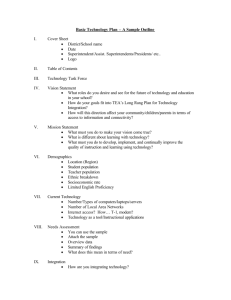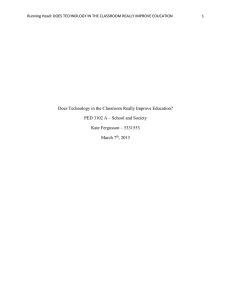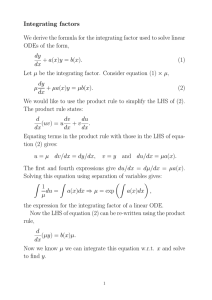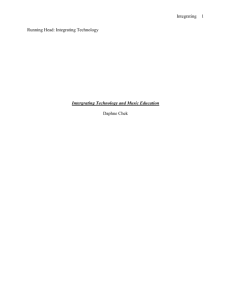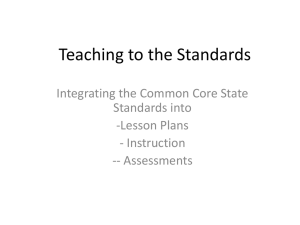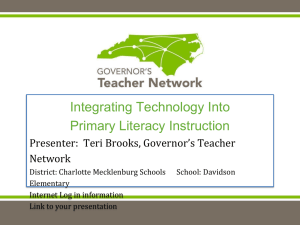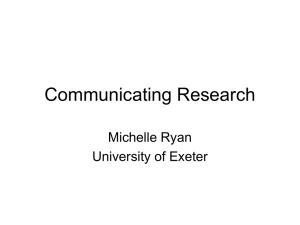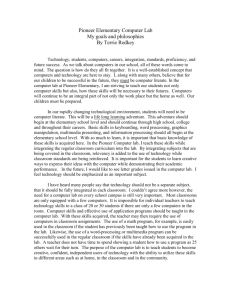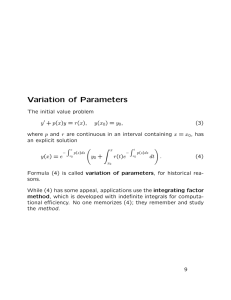“Technology and Academic Achievement”, Les Foltos
advertisement
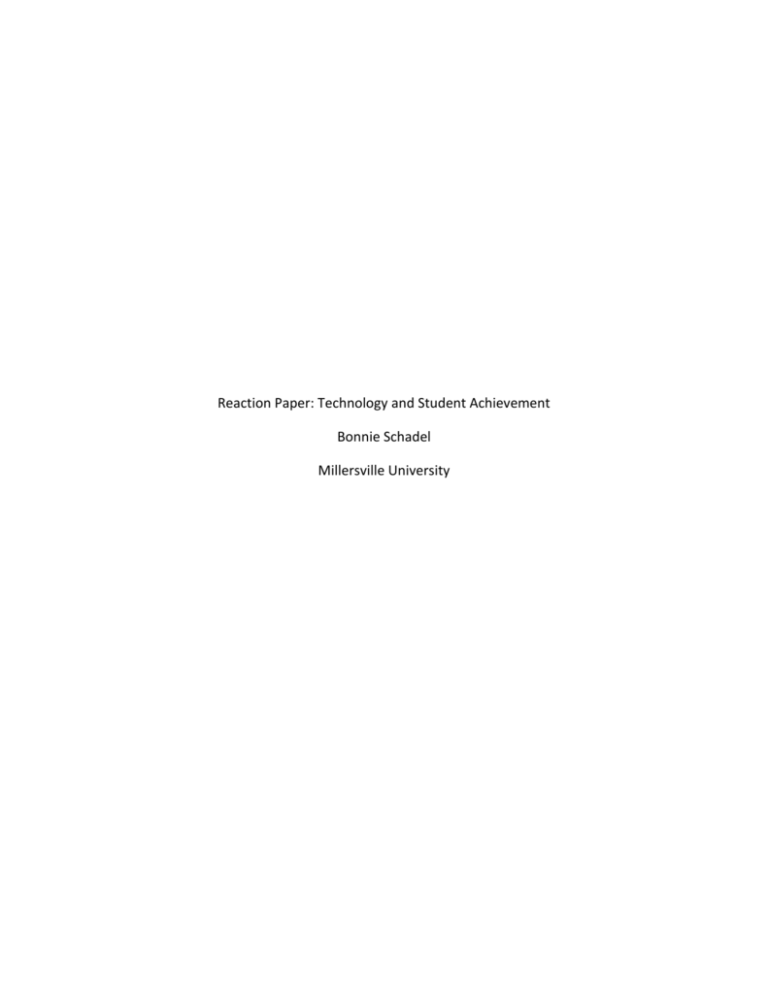
Reaction Paper: Technology and Student Achievement Bonnie Schadel Millersville University In the article, “Technology and Academic Achievement”, Les Foltos (2002) shares his views on whether or not technology has increased student achievement. In his research he found that, approximately fifteen years ago, billions of dollars were spent on integrating technology into the classrooms, but teachers were not given ample professional development to correctly utilize these technologies. A majority of teachers, at that time, did not use the provided technology and those that did use it did not integrate it effectively. Based on this information, it was decided that the money spent on implementing technology into the classrooms did not positively affect student achievement. The article went on to share recent studies that show technology can improve academic achievement if utilized correctly. When students are provided simulations and more complex work, the integration of technology provided greater academic achievement. However, when technology is used for lower level thinking skills, there is no cited achievement. So again, it appears that proper implementation is the key to technology positively affecting student achievement. It was noted in both looking at current trends and trends from several years ago, the amount of professional development given to teachers is key. If teachers are not properly trained or given the opportunity to learn the technology that is given to them, it doesn’t matter how much money is spent on that technology, it won’t help students succeed. No teacher feels comfortable teaching a new concept to students without feeling sure of the topic. The same goes for technology. If a teacher does not feel comfortable with the given technology, it is almost impossible to expect them to utilize it effectively. In a second article, “Critical Issue: Using Technology to Improve Student Achievement,” the writers share five considerations for successfully integrating technology into the classroom. They are 1. Specific educational goals and a vision of learning through technology 2. Ongoing professional development 3. Structural changes in the school day 4. A robust technical infrastructure and technical support 5. Ongoing evaluation They agree that there is more to successfully integrating technology into the classroom than purchasing new equipment. A major consideration on their list is “ongoing professional development” which supports Mr. Foltos’ claims. I found this article to very interesting since it shares some of my own thoughts and fears. I agree that technology can help improve student achievement. However, like the article indicated, professional development and successful integration is key. I know that I need to feel confident with my skills on a new technology before using the equipment in my classroom. This is the main reason I took this class. I want the technology in my classroom to motivate and accentuate my students’ learning experience. Bibliography Foltos, L. (2002, December). Technology and Academic Achievement. Retrieved June 23, 2010, from New Horizons for Learning: http://www.newhorizons.org/strategies/technology/foltos.htm Honey, M., McMillan Culp, K., & Spielvogel, R. (2005). Critical Issue: Using Technology to Improve Student Achievement. Retrieved June 23, 2010, from North Central Regional Educational Laboratory: http://www.ncrel.org/sdrs/areas/issues/methods/technlgy/te800.htm#top

